What Asus EPU did do previously was underclock and overclock the CPU in respect to load – further saving power or increasing performance. This over/underclock can now be tailored to a percentage specified by the user in the EPU-6 Engine software, customising the experience. We’re still yet to determine how much BIOS tweaking and overclocking you can do before it conflicts with the EPU however.
The EPU also regulates the north bridge and memory which now get 3-phases on this board – Asus told us that the phases are also adjusted on the fly, although it was unspecific about the jumps. We know MSI also does this, but that was a lot clearer – showing the phase use by LED indication on board.
Other great features ported over from previous Asus boards are the spongy Q-Shield (not shown here – we will highlight it in our full Asus P45 review) and backlit, onboard power and reset switches, although there’s no clear CMOS button.
The P5Q3 is specifically designed for DDR3, although there will be plenty of DDR2 models to choose from – we will be reviewing a retail version of the P5Q Deluxe. The layout is, well, kind of strange at first glance though – the first graphics slot is really quite low down because the memory slots are half way down the board. This actually works well because not only does it allow more space above them for components, but also room for a PCI-Express x1 and PCI slot above the graphics card.
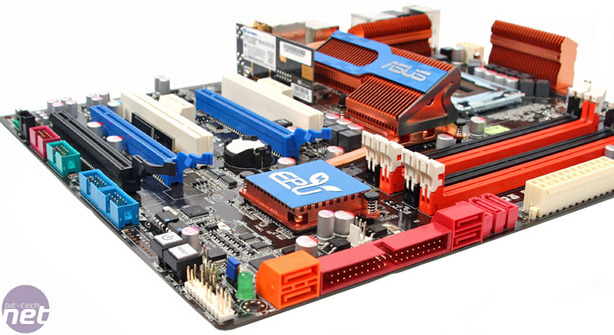
This also means the SATA connectors are a little skewiff – three are facing outward and two are 90 degrees to the side, which provides a variety of options. These are accompanied by a couple of extra orange SATA ports from a Silicon Image controller that Asus is touting as its “Drive Xpert” feature where the two SATA connectors are agnostic to the OS and are only seen as one. The reason why a simple RAID 0 or 1 array has been renamed is because Asus wants to make it more user-friendly. It’s managed through the Splashtop interface that features a very simple GUI setup – this makes it far more user friendly than a BIOS style interface that Intel’s Matrix RAID has.
The two blue PCI-Express x16 slots are upgraded to PCI-Express 2.0 and are now either x16 and x1 or dual x8 bandwidth – between them you can see the digital switch. P35 was previously locked to a single PCI-Express 1.1 x16 lane, so any CrossFire had to be routed through this and an x4 slot through the south bridge that was far from ideal.
Asus has had to balance where it uses PCI and PCI-Express because Intel’s ICH10R is still limited to just six PCI-Express 1.1 lanes. The LSI Firewire controller and one of the Marvell Gigabit Ethernet controllers are PCI based and the RALink 802.11n Wireless is routed through two of the USB ports. In addition, and as usual, using any of the PCI-Express x1 slots downgrades the x4 slot to x1 bandwidth too.

MSI MPG Velox 100R Chassis Review
October 14 2021 | 15:04


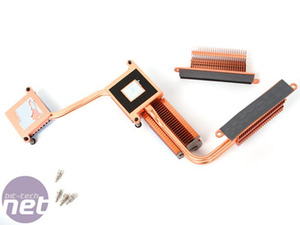
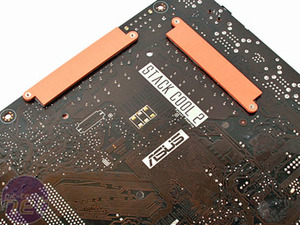

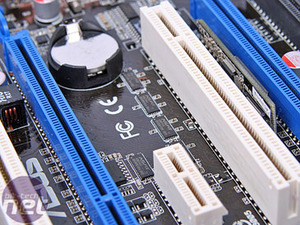
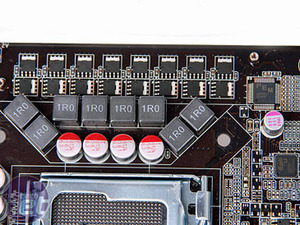
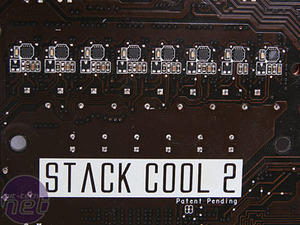







Want to comment? Please log in.